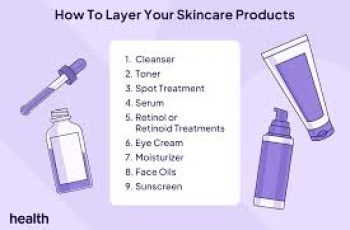
What Is Dermaplaning and How Can It Benefit Your Skin?
Dermaplaning is a gentle exfoliation treatment that removes dead skin and fine facial hair using a small, sterile blade. It’s a popular choice for smoother, brighter, and more even-looking skin.
Originally used by dermatologists and estheticians, dermaplaning is now offered in med spas and skin clinics. Some people even try it at home, though professional treatment is more effective.
This guide will explain how dermaplaning works, what to expect, who it’s best for, and the risks and benefits you should know.
What Is Dermaplaning?
Dermaplaning is a cosmetic treatment where a sharp, medical-grade blade is gently run across the skin.
This process removes:
Dead skin cells
Dirt and oil buildup
Fine vellus hair (peach fuzz)
The goal is to exfoliate the top layer of skin and reveal smoother, brighter skin underneath. It also helps skin care products work better by allowing them to absorb more easily.
How Does Dermaplaning Work?
A trained professional uses a sterile scalpel at a 45-degree angle to scrape off buildup from the skin’s surface.
You may feel a light scraping sensation, but it shouldn’t hurt. Most sessions last between 10 and 60 minutes, depending on the area treated.
Dermaplaning is more than just shaving. While both remove facial hair, dermaplaning also deeply exfoliates dead skin cells that dull your complexion.
Benefits of Dermaplaning
Dermaplaning offers many skin benefits. While results are temporary, many people choose to repeat the treatment regularly for glowing skin.
1. Smoother, Brighter Skin
Dead skin cells make the face look dull and feel rough. Dermaplaning removes them to reveal softer, more radiant skin.
2. Better Product Absorption
Skincare products like serums and moisturizers absorb better after dermaplaning because the barrier of dead skin is gone.
3. Removes Peach Fuzz
The blade removes fine facial hairs, which can make makeup go on smoother and reduce patchiness or caking.
4. Fades Dark Spots
By exfoliating, dermaplaning can fade hyperpigmentation from acne, age, or melasma, leading to a more even tone.
5. Softens Fine Lines
It boosts cell turnover and collagen production, which can reduce the appearance of fine lines and mild acne scars over time.
Who Can Benefit from Dermaplaning?
Dermaplaning is a good option for people who want smoother skin with little to no downtime. It’s often safer than chemical peels or lasers for sensitive skin.
It works well for those with:
Dry or dull skin
Uneven texture or tone
Acne scars (non-inflamed)
Fine lines and wrinkles
Light facial hair
Who Should Avoid Dermaplaning?
Dermaplaning is not for everyone. You should avoid this treatment if you have:
Active acne or skin infections
Cold sores or open wounds
Rosacea or eczema flares
Raised scars or keloids
A history of skin cancer in the area
If you’ve taken acne medication like isotretinoin (Accutane) in the past 6 months, you should avoid dermaplaning due to the risk of scarring.
What to Expect During the Procedure
Before your treatment, your provider will ask about your skin concerns and medical history.
During the procedure:
Your face is cleansed and dried.
A sterile blade is gently moved across your skin.
You may feel slight scraping, but it should not hurt.
Afterward, a soothing serum or moisturizer is applied.
The whole process is quick, and there is no need for anesthesia.
What Does Recovery Look Like?
Recovery is simple and short. After dermaplaning, your skin may feel sensitive, warm, or slightly pink—similar to a mild sunburn.
These effects usually fade in a few hours or by the next day. You can return to your regular routine right away.
However, your skin will be more sensitive to sunlight. You’ll need to avoid direct sun exposure and apply SPF 30 or higher daily.
How Often Should You Get Dermaplaning?
Most people repeat the treatment every 3 to 4 weeks. This is because it takes about 28 days for new dead skin to build up again.
Depending on your skin type and goals, you may choose to do it monthly or every other month.
Frequent dermaplaning can support long-term improvements in tone, texture, and brightness.
Does Dermaplaning Make Hair Grow Back Thicker?
No. This is a common myth. Removing facial hair with dermaplaning does not change its color, thickness, or growth rate.
Hair will grow back just as it was before—soft and light. It may feel different when growing in, but it won’t become coarse or dark.
What About At-Home Dermaplaning?
There are many at-home dermaplaning kits available, but they are less effective than professional treatments.
At-home blades are often serrated and not as sharp. They remove surface-level debris and hair but do not exfoliate as deeply.
Also, improper use can lead to:
Nicks or cuts
Skin irritation
Spread of bacteria
If you try it at home, always use a clean, sterile blade, and follow the instructions carefully.
Are There Any Risks or Side Effects?
Dermaplaning is usually safe when done by a trained professional. However, it can still come with some mild side effects.
Common side effects include:
Redness, Sensitivity, Slight swelling, Tingling
These usually go away within 24 hours.
Rare risks include:
Infection
Scarring
Post-inflammatory hyperpigmentation (PIH)
Worsening of melasma if done improperly
Always see a licensed provider to reduce these risks.
How to Care for Skin After Dermaplaning
Proper aftercare helps your skin heal and stay glowing after treatment. Here’s what to do:
Avoid sun exposure for at least one week.
Use sunscreen daily with SPF 30 or higher.
Don’t use retinol, exfoliants, or strong acids for 2–3 days.
Gently wash your face with a mild cleanser.
Moisturize daily to soothe and protect the skin barrier.
If your skin feels irritated or itchy, avoid scratching and use a cooling, fragrance-free moisturizer.
Dermaplaning vs. Other Exfoliating Treatments
Let’s compare dermaplaning with other exfoliating treatments:
Treatment Invasiveness Recovery Time Key Benefit
Dermaplaning Low 1–2 days Smooth texture, remove peach fuzz
Chemical Peel Medium–High 3–7 days Fade hyperpigmentation, stimulate collagen
Microdermabrasion Low–Medium 1–3 days Sand away rough skin, improve tone
Laser Resurfacing High 7–14 days Targets deep wrinkles and damage
Dermaplaning is a great choice if you want instant smoothness with minimal irritation and no peeling.
Quick Summary
Dermaplaning removes dead skin and peach fuzz with a sterile blade.
It helps brighten the skin, fade spots, and soften lines and scars.
It boosts skincare absorption and allows smoother makeup application.
It’s best for people without active breakouts or inflamed skin.
Professional treatments are more effective and safer than DIY kits.
Sun protection and hydration are key aftercare steps.


